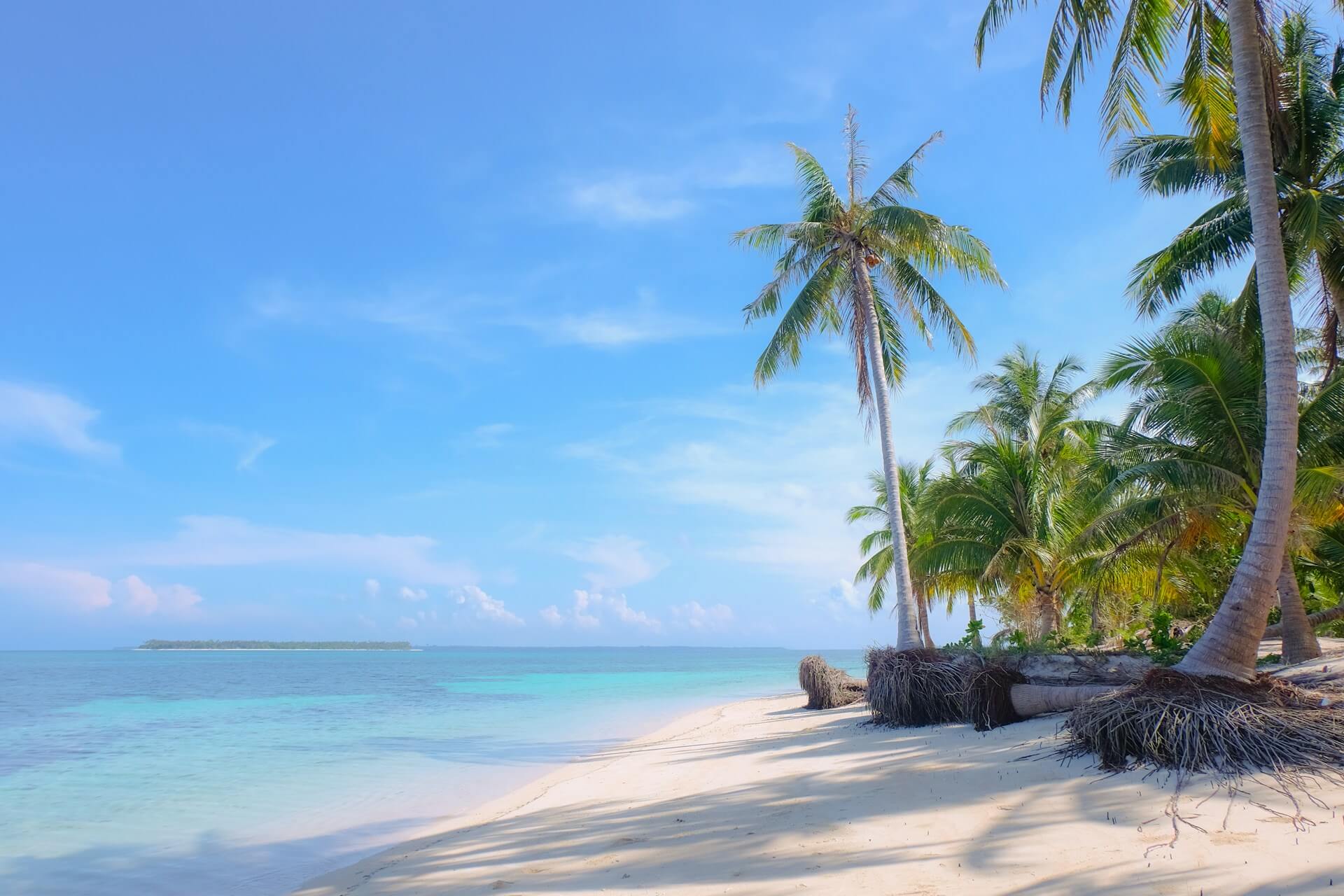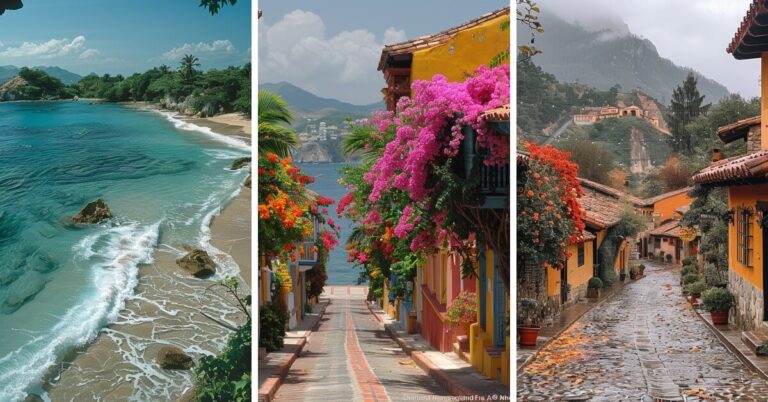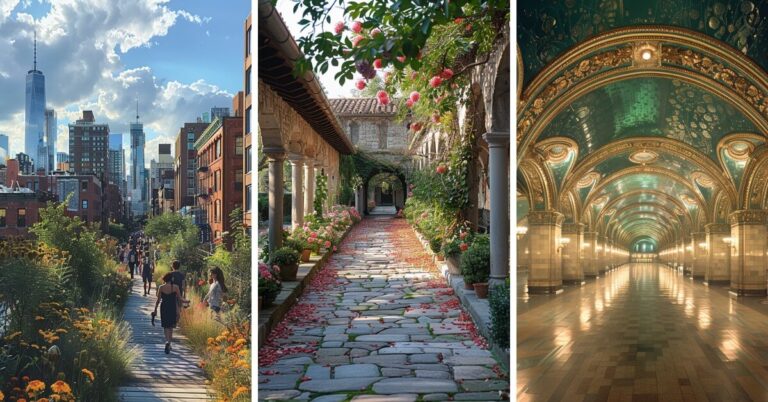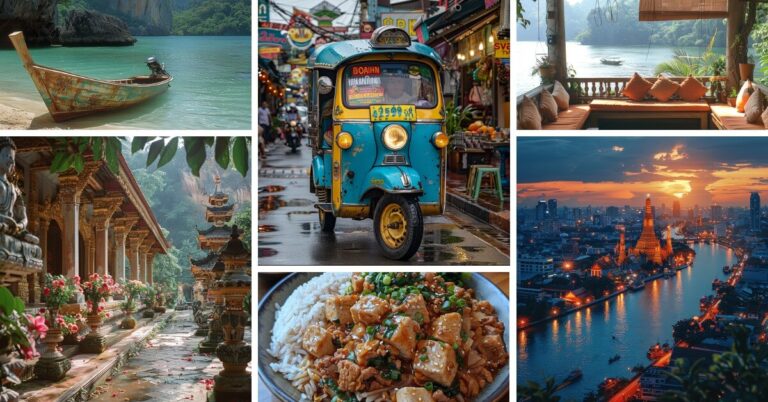21 Best Hidden Beaches in the Philippines for Solo Travelers
The Philippines is a treasure trove of breathtaking beaches, many of which remain blissfully undiscovered by the masses.
From powdery white sands and crystal-clear waters to dramatic rock formations and vibrant marine life, these hidden beaches offer a slice of paradise where you can find peace, adventure, and everything in between.
You’re here because, like me, you crave those secret, untouched corners of the world where you can truly immerse yourself in nature.
You’re not just a traveler; you’re an explorer, seeking out the beauty that lies off the beaten path.
I remember the first time I stumbled upon Paliton Beach in Siquijor – it was just me, the soft whisper of the waves, and a sunset that seemed to paint the sky just for me.
That moment of pure tranquility is what keeps me hunting for more hidden gems.
In this article, you’ll uncover some of the best hidden beaches in the Philippines for solo travelers.
I’ll share my personal experiences, practical tips, and comprehensive details about each destination.
From how to get there, the best time to visit, and solo travel tips, to local attractions and safety advice.
This guide will equip you with everything you need for your next solo adventure.
With that being said, here are 21 of the best hidden beaches in the Philippines for solo travelers.
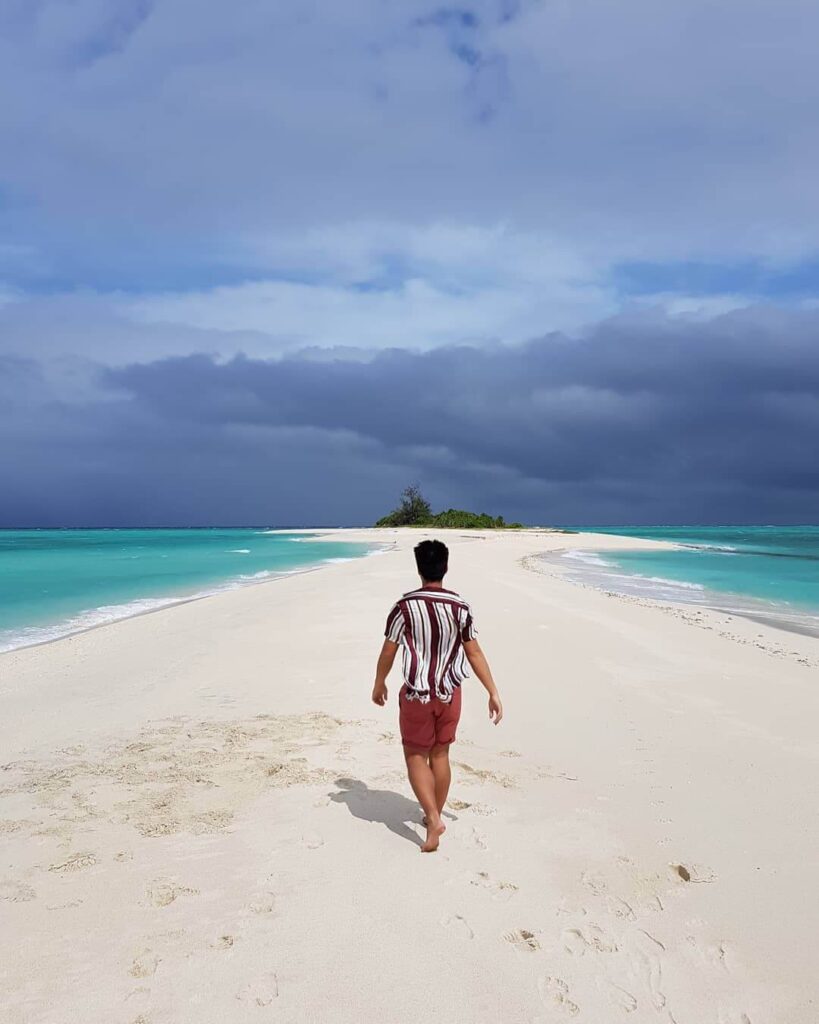
1. Cresta de Gallo, Romblon
Cresta de Gallo is a small, uninhabited island off the coast of Romblon.
This crescent-shaped gem boasts powdery white sands, crystal-clear waters, and vibrant coral reefs teeming with marine life.
The tranquility of this place is truly unparalleled, making it a perfect escape for those seeking solitude.
I remember the first time I set foot on Cresta de Gallo; it felt like stepping into a postcard.
With only the sound of the waves and a gentle breeze, it was as if time stood still.
Best Time to Visit:
The best time to visit Cresta de Gallo is during the dry season, from November to May when the weather is most favorable for beach activities and exploration.
How to Get There:
First, take a flight from Manila to Tugdan Airport on Tablas Island, Romblon.
From the airport, travel by van or jeepney to San Agustin Port.
Arrange a boat ride from San Agustin to Cresta de Gallo, which takes about 1.5 to 2 hours.
Tips for Solo Travelers:
Plan ahead by arranging your boat trip in advance, as transportation options can be limited.
Bring enough water, snacks, and sun protection, since there are no facilities on the island.
For safety, inform someone about your travel plans and expected return time.
Respect the pristine environment by carrying out all your trash and avoiding damage to the coral reefs and marine life.

2. Sepoc Beach, Batangas
Sepoc Beach, located on Maricaban Island in Batangas, is a hidden gem that offers a perfect blend of seclusion and natural beauty.
With its pristine sands, clear blue waters, and lush greenery, it’s an idyllic spot for relaxation and adventure.
Whether you’re interested in swimming, snorkeling, or simply lounging under the sun, Sepoc Beach provides a peaceful retreat just a few hours from Manila.
I remember my visit to Sepoc Beach; the serenity of the beach, coupled with the gentle rustling of the palm trees, made it an unforgettable escape from the daily grind.
Best Time to Visit:
The best time to visit Sepoc Beach is during the dry season, from November to May, when the weather is perfect for beach activities and exploring the island.
How to Get There:
Start by taking a bus or driving from Manila to Anilao, Batangas, which takes about 2-3 hours.
From Anilao, you can arrange for a boat transfer to Sepoc Beach.
The boat ride typically takes around 45 minutes, offering scenic views of the coastline.
Solo Travel Safety Tips:
When traveling solo to Sepoc Beach, ensure you have all necessary arrangements in place, including your boat transfer to and from the island.
It’s advisable to inform the boat operators of your return schedule.
Pack sufficient food, water, and sunscreen, as the beach is quite secluded with no nearby stores.
Always keep your personal belongings secure and stay aware of your surroundings, especially when exploring less frequented areas of the beach.
Lastly, let someone know your itinerary and expected return time for added peace of mind.

3. Paliton Beach, Siquijor
Paliton Beach is a stunning spot on the mystical island of Siquijor.
Known for its pristine white sands and crystal-clear waters, it’s a tranquil haven perfect for swimming, sunbathing, and snorkeling.
The beach is framed by coconut trees, providing ample shade and a picturesque backdrop.
Best Time to Visit:
The ideal time to visit Paliton Beach is from November to May, during the dry season, ensuring clear skies and calm seas.
How to Get There:
Fly from Manila to Dumaguete City.
From Dumaguete, take a ferry to Siquijor Island, which typically takes about 1.5 to 2 hours.
Once on the island, you can hire a tricycle or motorcycle to reach Paliton Beach, located on the western coast near San Juan.
Local Attractions and Solo Travel Tips:
While in Siquijor, explore the island’s many other attractions, such as Cambugahay Falls, Salagdoong Beach, and the mystical Balete Tree.
The island is known for its friendly locals and laid-back atmosphere, making it a great place for solo travelers.
When visiting Paliton Beach, bring snacks, water, and sun protection, as amenities are limited.
Make sure to keep your belongings safe and stay aware of your surroundings, especially if you decide to explore less populated areas.
Engaging with locals can also provide valuable insights and enhance your travel experience.
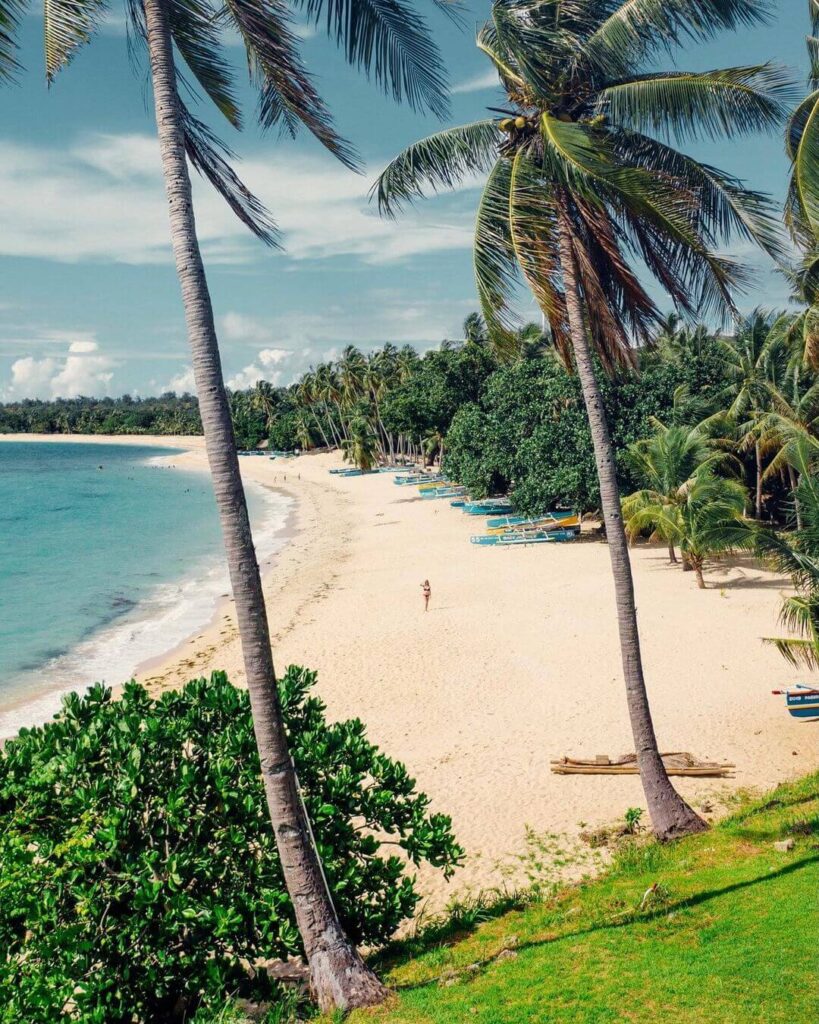
4. Saud Beach, Pagudpud
Saud Beach, located in Pagudpud, Ilocos Norte, is renowned for its expansive shoreline and unspoiled beauty.
The beach features powdery white sand and calm, turquoise waters, making it an idyllic destination for those seeking tranquility and natural splendor.
Lined with coconut trees, Saud Beach offers a perfect blend of scenic views and peaceful ambiance, ideal for solo travelers.
Best Time to Visit:
The best time to visit Saud Beach is from November to April, during the dry season.
This period ensures pleasant weather and optimal conditions for beach activities.
How to Get There:
To reach Saud Beach, fly from Manila to Laoag International Airport, which is the nearest airport to Pagudpud.
From Laoag, you can take a bus or van to Pagudpud, a journey of about 1.5 to 2 hours.
Upon arriving in Pagudpud, local transportation options such as tricycles can take you directly to Saud Beach.
Suggested Activities for Solo Travelers:
Saud Beach offers a variety of activities that solo travelers can enjoy.
You can swim in the clear, gentle waves, sunbathe on the expansive beach, or take long, leisurely walks along the shore.
The beach is also a great spot for snorkeling, with several areas teeming with marine life.
For a more active adventure, rent a kayak or paddleboard and explore the coastal waters.
In the evening, relax and enjoy the stunning sunset, a perfect way to end a day of beachside exploration.
More Undiscovered Gems:
While Saud Beach is a highlight, Pagudpud and its surrounding areas are home to several other hidden treasures.
Don’t miss Blue Lagoon, a quieter but equally beautiful beach known for its clear waters and serene environment.
Additionally, visit the nearby Patapat Viaduct, a coastal bridge offering breathtaking views of the sea and mountains.
For a bit of adventure, trek to Kabigan Falls, a scenic waterfall nestled in lush greenery.
Each of these spots offers unique experiences and further opportunities to explore the natural beauty of the region.
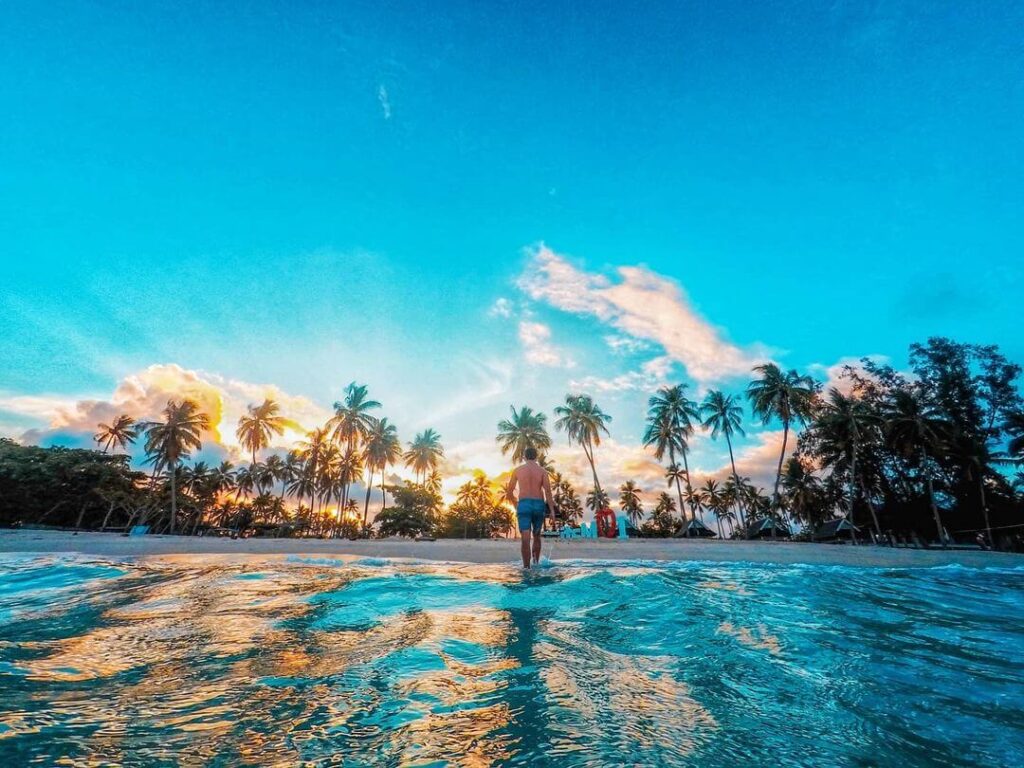
5. Dahican Beach, Mati
Dahican Beach in Mati, Davao Oriental, is a mecca for surfers and skimboarders, known for its long stretch of golden sand and powerful waves.
This seven-kilometer coastline is a playground for water sports enthusiasts, offering ideal conditions for both beginner and experienced surfers.
The beach’s vibrant community of local surfers and skimboarders adds to its energetic and welcoming atmosphere.
I’ve spent countless mornings riding the waves at Dahican, feeling the rush of adrenaline and the pure joy of being one with the ocean.
The thrill of catching that perfect wave, especially as a solo traveler, is an experience that stays with you long after you’ve left the beach.
Best Time to Visit:
The best time to visit Dahican Beach for surfing and skimboarding is from October to March when the waves are at their best.
For those looking for calmer waters, the months of April to September are ideal.
How to Get There:
Fly from Manila to Davao City, which is the nearest major city to Mati.
From Davao City, you can take a bus or van to Mati, a journey that typically takes about 3 to 4 hours.
Once in Mati, local transport options like tricycles can take you directly to Dahican Beach.
Tips for Solo Adventurers:
Dahican Beach is perfect for solo adventurers looking for both excitement and relaxation.
When planning your trip, pack light but include essentials such as sunscreen, a hat, and plenty of water.
Renting a surfboard or skimboard is easy, with many local shops offering equipment and lessons if needed.
Always be mindful of the ocean conditions and your skill level, especially if you’re new to surfing or skimboarding.
Connect with the local surfing community – they are incredibly friendly and can offer valuable tips and insights.
Additionally, make sure to explore beyond the beach; the nearby Pujada Island and Sleeping Dinosaur Island offer stunning views and are great for day trips.

6. Mahabang Buhangin, Calaguas
Mahabang Buhangin, located on Tinaga Island in the Calaguas group, is a remote and unspoiled beach known for its powdery white sands and crystal-clear waters.
This secluded paradise is perfect for those looking to disconnect from the hustle and bustle of everyday life and immerse themselves in nature.
The lack of commercial development means you get to enjoy the beach in its most pristine form, surrounded by lush greenery and a serene atmosphere.
Camping under the stars at Mahabang Buhangin is one of my most cherished memories.
As the sun set, the sky transformed into a canvas of brilliant stars, and the gentle lapping of the waves was the perfect lullaby.
It was a magical experience that made me appreciate the simple beauty of nature even more.
Best Time to Visit:
The best time to visit Mahabang Buhangin is during the dry season, from November to May when the weather is ideal for beach activities and camping.
Avoid the rainy season from June to October, as the area can be affected by heavy rains and rough seas.
How to Get There:
To reach Mahabang Buhangin, first, travel from Manila to Daet, Camarines Norte, by bus, which takes about 8 to 10 hours.
From Daet, head to the port in Vinzons or Paracale, where you can hire a boat to take you to Calaguas Island.
The boat ride usually takes around 2 to 3 hours, depending on the weather and sea conditions.
Practical Tips for a Solo Trip:
When preparing for camping at Mahabang Buhangin, a remote destination lacking facilities, ensure to bring all the necessary gear.
Including a tent, sleeping bag, and cooking equipment, along with essentials like insect repellent, a flashlight, and a portable power bank.
Additionally, stock up on supplies such as food, water, and other necessities, as there are no stores on the island.
Prioritize safety by informing someone about your travel plans and expected return date, even as you seek solitude.
It’s crucial to stay connected while respecting the environment and practicing “Leave No Trace” principles to preserve the pristine beauty of Mahabang Buhangin.
Engage with locals, including fishermen and other visitors, to gain valuable insights and enhance your overall experience on the island.
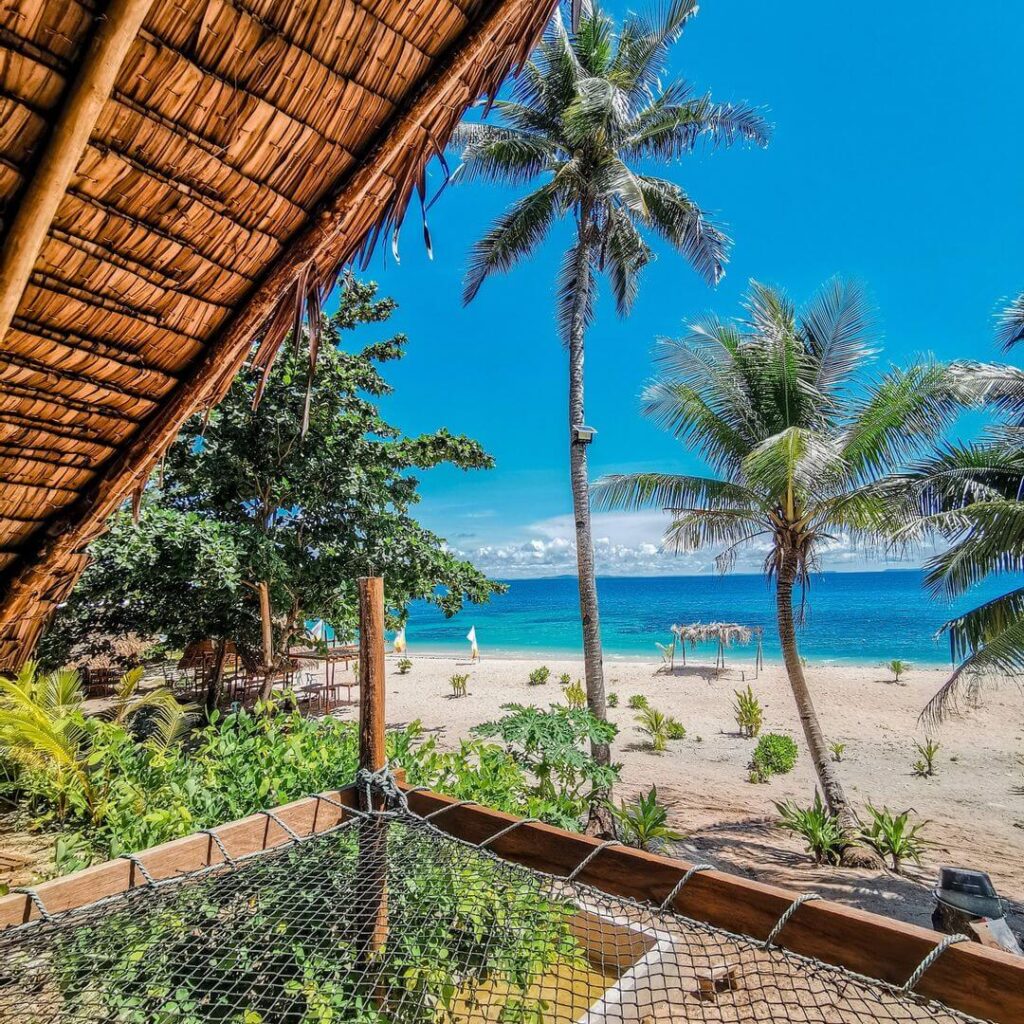
7. Handig Beach, Homonhon
Handig Beach on Homonhon Island is not just a beautiful destination but also a site of great historical significance.
This is where Ferdinand Magellan first landed in the Philippines in 1521.
The beach itself is stunning, with its golden sands and clear blue waters, surrounded by lush greenery and an atmosphere of tranquility that seems untouched by time.
Walking along this historic shore, you can almost feel the echoes of the past blending with the serene beauty of the present.
Best Time to Visit:
The ideal time to visit Handig Beach is during the dry season, from December to May when the weather is most favorable for beach activities and exploration.
How to Get There:
To reach Handig Beach, start by flying to Tacloban City in Leyte, the nearest major city.
From Tacloban, take a bus or van to Guiuan, Eastern Samar, which usually takes around 3 to 4 hours.
Once in Guiuan, you can hire a boat to take you to Homonhon Island, with the journey by sea taking approximately 2 hours.
Exploring Alone Safely:
When exploring Handig Beach alone, it’s important to prioritize safety.
Begin by planning your trip thoroughly, and informing someone about your itinerary and expected return time.
Pack essentials such as sufficient food, water, a first aid kit, and a charged mobile phone.
Since the island is relatively remote, ensure you have everything you might need for a day of exploration.
Respect the environment by practicing “Leave No Trace” principles, which help preserve the natural beauty and cleanliness of Handig Beach.
Additionally, engage with local residents.
They are often friendly and can provide helpful tips about the area, enhancing your experience and ensuring a safe and enjoyable visit.
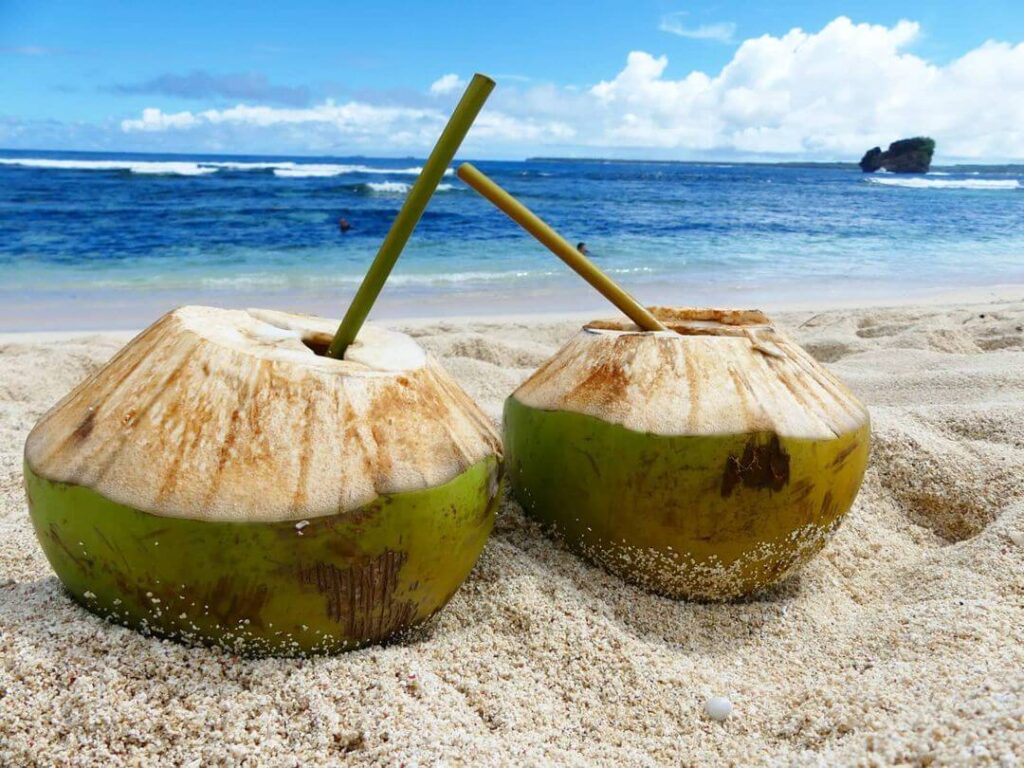
8. Magpupungko Beach, Siargao
Magpupungko Beach in Siargao is famous for its stunning natural rock pools and crystal-clear waters.
During low tide, these pools reveal themselves, creating perfect spots for swimming and snorkeling.
The surrounding rock formations add a dramatic touch to the scenery, making it a unique destination on the island.
It’s a place where you can enjoy both the beauty of the ocean and the fascinating geological formations.
I remember my first visit to Magpupungko Beach vividly. The allure of the natural pools was irresistible.
As I swam in the clear waters, I felt a sense of tranquility and wonder, marveling at the natural beauty around me.
It’s one of those rare places where you can feel completely at peace while also being in awe of nature’s creativity.
Best Time to Visit:
The best time to visit Magpupungko Beach is during the dry season, from March to October.
To fully experience the rock pools, plan your visit around low tide, as they are not visible during high tide.
How to Get There:
To reach Magpupungko Beach, fly to Siargao’s Sayak Airport, then take a van or motorbike to General Luna, the main tourist hub on the island.
From General Luna, it’s a scenic 45-minute to 1-hour drive to Magpupungko Beach.
You can even rent a motorbike or hire a local driver to take you there.
Tips for Solo Travelers:
When traveling solo to Magpupungko Beach, timing your visit around low tide is crucial to fully enjoy the rock pools.
Always check the tide schedule in advance.
Bring essentials like water, snacks, sunscreen, and a hat to protect yourself from the sun.
Since the area can get slippery, wear sturdy water shoes to navigate the rocky terrain safely.
Keep your belongings secure, as the beach can get busy during peak times.
Engage with locals and other travelers—they can offer valuable tips and enhance your experience with their stories and insights.
Lastly, embrace the adventure and take the time to relax and appreciate the unique beauty of Magpupungko Beach.
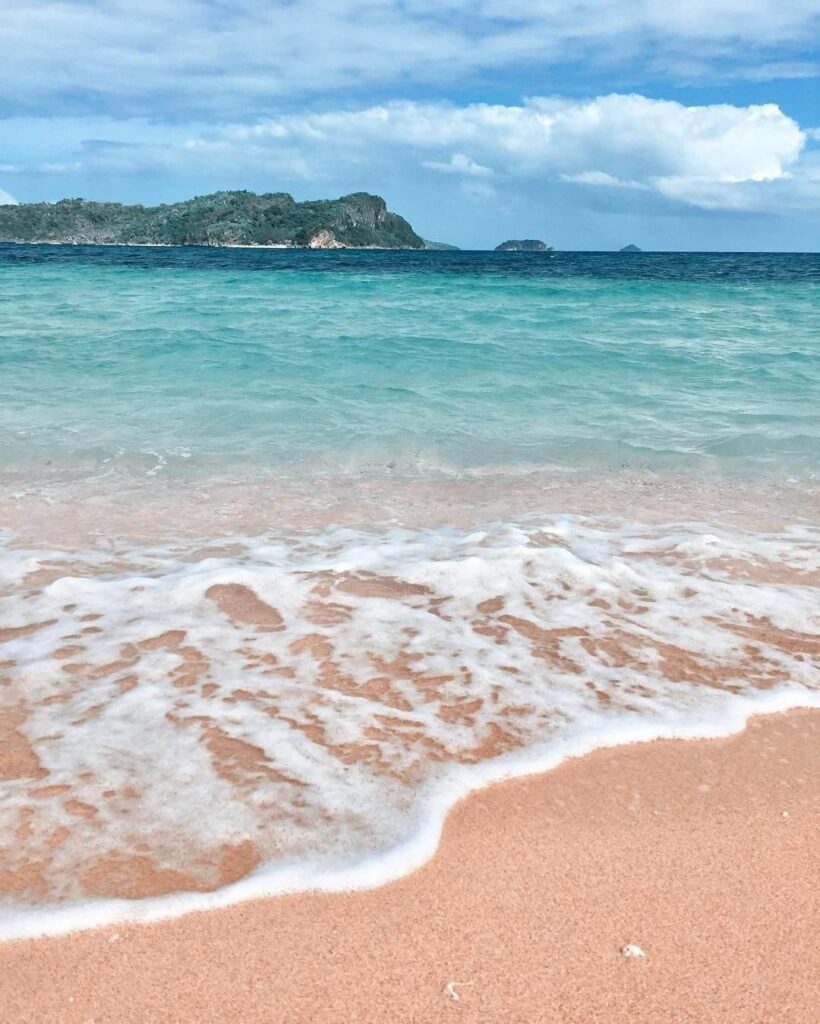
9. Antonia Beach, Islas de Gigantes Sur
Antonia Beach, nestled in the Islas de Gigantes Sur, is a hidden gem known for its breathtaking rock formations and pristine, clear waters.
This picturesque beach offers a sense of tranquility and seclusion, perfect for solo travelers seeking a peaceful escape.
The dramatic cliffs and limestone formations provide a stunning backdrop, making every moment feel like a scene from a movie.
Visiting Antonia Beach felt like stepping into a different world for me.
As I wandered along the shore, surrounded by towering rock formations and the sound of the gentle waves, I couldn’t help but feel like a castaway discovering a private paradise.
The isolation and beauty of the place were truly mesmerizing.
Best Time to Visit:
The best time to visit Antonia Beach is during the dry season, from November to May, when the weather is ideal for beach activities and exploring the island.
The clear skies and calm seas make for perfect beach days.
How to Get There:
To reach Antonia Beach, first travel to Iloilo City.
From there, take a bus or van to the town of Carles, which usually takes about 3 to 4 hours.
In Carles, head to Bancal Port and hire a boat to take you to the Islas de Gigantes.
The boat ride typically takes around 1 to 2 hours.
Once you arrive, you can hire a local guide to take you to Antonia Beach.
Solo Travel Tips:
When traveling solo to Antonia Beach, pack all the essentials you’ll need for a remote island adventure, including sunscreen, a hat, plenty of water, and snacks.
Ensure you have a fully charged mobile phone and a portable power bank, as there might be limited charging facilities on the island.
Inform someone about your travel plans and expected return time for safety reasons.
Respect the environment by practicing “Leave No Trace” principles, helping to keep the beach clean and beautiful.
Engage with the local community—they are friendly and can provide useful tips and information about the area.
Finally, take the time to relax, explore, and soak in the natural beauty of Antonia Beach, making the most of your solo adventure.
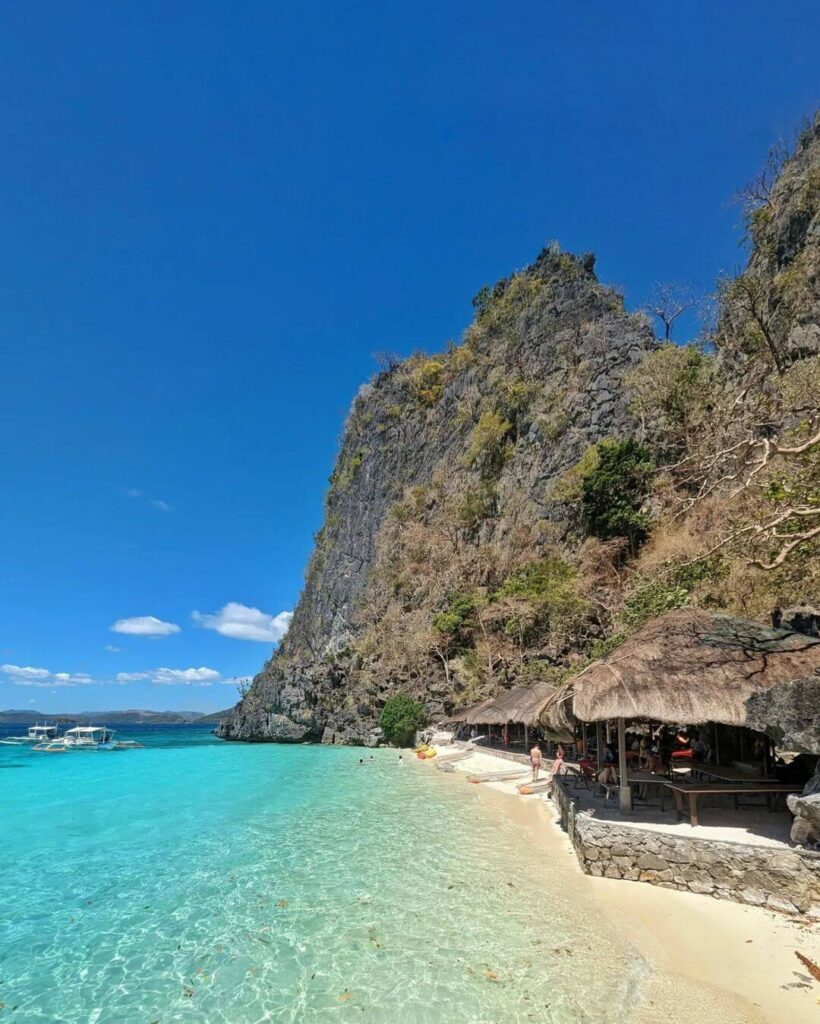
10. Coron, Palawan
Coron in Palawan is renowned as one of the best wreck-diving destinations in the world.
The area is dotted with numerous World War 2 Japanese shipwrecks, now transformed into thriving underwater ecosystems.
Divers from around the globe come here to explore these submerged relics, surrounded by colorful coral gardens and diverse marine life.
The combination of historical significance and natural beauty makes Coron a must-visit for diving enthusiasts.
Diving in Coron is like stepping back in time.
I vividly remember my first dive at one of the shipwrecks, feeling a mix of awe and reverence as I explored the remnants of history.
Swimming through the wreck, with schools of fish darting around me, I felt a profound connection to the past and a deep appreciation for the underwater world.
Best Time to Visit:
The best time to visit Coron is during the dry season, from November to May when the weather is ideal for diving and other outdoor activities.
The waters are clearest during these months, providing excellent visibility for underwater exploration.
How to Get There:
To reach Coron, fly to Francisco B. Reyes Airport on Busuanga Island, Palawan.
From the airport, it’s a 30- to 40-minute drive to Coron town.
Numerous flights operate daily from Manila, Cebu, and other major cities in the Philippines.
Tips for Solo Divers:
When diving solo in Coron, prioritize safety by joining a reputable dive shop or tour operator.
They provide essential support and ensure you dive at safe and suitable sites.
Make sure to bring all necessary diving certifications and equipment, or rent high-quality gear from the dive shops in Coron.
Always inform someone about your diving plans and expected return time, especially if you’re exploring deeper wrecks.
Respect the marine environment by avoiding contact with coral and marine life, and follow the guidelines set by your dive guide to ensure a safe and environmentally friendly experience.
Take time to relax and explore the beautiful town of Coron when you’re not diving.
The local community is welcoming, and you can learn a lot about the area’s rich history and culture.
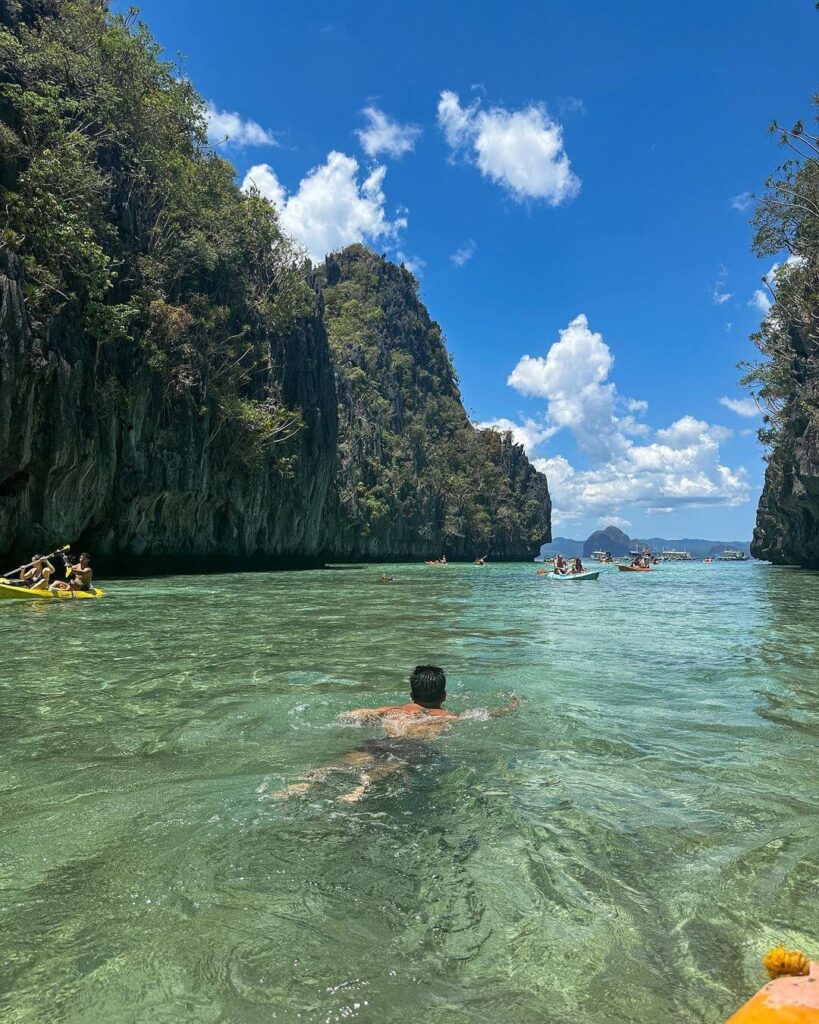
11. El Nido, Palawan
El Nido, Palawan, is renowned for its stunning beaches, towering limestone cliffs, and crystal-clear waters.
It’s a paradise for those seeking breathtaking views and adventure.
Best Time to Visit:
The best time to visit El Nido is during the dry season, from November to May when the weather is perfect for island hopping and beach activities.
How to Get There:
Fly to El Nido’s Lio Airport or Puerto Princesa Airport and take a 5-6 hour van ride to El Nido town.
Alternatively, you can take a direct flight to El Nido from Manila or Cebu.
Tips for Solo Adventurers:
Joining group island hopping tours is a great way to ensure a safe and social experience.
Remember to bring sunscreen, a hat, and plenty of water to stay protected from the sun.
Exploring less crowded islands early in the morning can provide a more serene experience.
Staying in a centrally located hostel will make it easier to meet fellow travelers and share experiences.
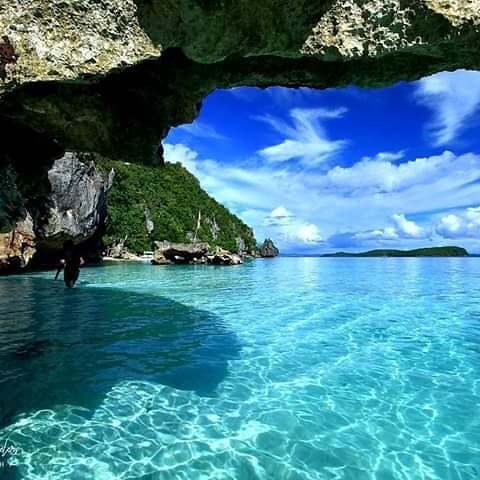
12. Bitaog Beach, Catanduanes
Bitaog Beach in Catanduanes offers a tranquil escape with its serene surroundings and pristine beauty.
This hidden gem is characterized by its fine white sand, clear turquoise waters, and lush greenery that provide a picturesque backdrop.
The beach also offers breathtaking sunset views that paint the sky in vibrant hues, creating a magical end to your day.
Best Time to Visit:
The ideal time to visit Bitaog Beach is during the dry season, from December to May.
During these months, you can expect clear skies and calm seas, making it perfect for beach activities and relaxation.
How to Get There:
To reach Bitaog Beach, fly to Virac Airport in Catanduanes.
From there, take a tricycle or jeepney to the beach, which is about 2-3 hours away.
The journey through the scenic countryside adds to the charm of the adventure.
Tips for Solo Travelers:
Pack all essentials, including food and water, as there are limited facilities on the beach.
Inform someone about your travel plans and expected return time.
Bringing a good book or journal can enhance your experience of solitude and reflection.
Engaging with locals can provide valuable insights about the area and enrich your visit.

13. Borawan, Quezon Province
Borawan in Quezon Province is a unique destination that combines the best features of Boracay and Palawan.
And offer visitors the pristine white sand beaches of Boracay along with the stunning rock formations reminiscent of Palawan.
The beach’s name itself is a blend of “Boracay” and “Palawan,” reflecting its unique appeal.
The calm, crystal-clear waters make it perfect for swimming and snorkeling, while the dramatic cliffs provide a picturesque backdrop for beachgoers and photographers alike.
Best Time to Visit:
Visit Borawan from March to May for the best weather conditions, ensuring clear skies and calm seas perfect for beach activities.
How to Get There:
To reach Borawan, travel by bus from Manila to Lucena.
From there, take a van or jeepney to Padre Burgos. Once in Padre Burgos, hire a boat to take you to Borawan Island.
Tips for a Solo Trip:
If you plan to stay overnight, bring camping gear as there are no hotels or resorts on the island.
Exploring nearby beaches like Puting Buhangin and Dampalitan adds variety to your trip.
Ensure you carry enough cash since there are no ATMs on the island, and always respect local customs and the environment to preserve Borawan’s natural beauty and cultural heritage.

14. Jomalig Island, Quezon Province
Jomalig Island is an unspoiled sanctuary renowned for its golden sand beaches and crystal-clear waters.
What sets Jomalig apart is its relatively untouched beauty, offering an idyllic escape for those seeking tranquility and natural splendor.
The island is also famous for its serene ambiance and friendly locals, making it a perfect retreat for solo travelers.
Additionally, the island’s diverse marine life and vibrant coral reefs provide excellent opportunities for snorkeling and diving.
Best Time to Visit:
The best time to visit Jomalig is during the dry season, from March to May when the weather is ideal for beach activities and exploring the island.
How to Get There:
Take a bus from Manila to Real, Quezon.
From Real, board a ferry to Jomalig Island, which takes about 5-6 hours.
Solo Travel Tips:
Prepare for a long journey with snacks and entertainment.
Stay in local homestays to support the community and experience genuine Filipino hospitality.
Pack a portable charger for your devices to stay connected, and respect the local way of life and natural surroundings.
For an added tip, bring cash as there are no ATMs on the island, and always keep your belongings secure while exploring the beautiful and remote areas of Jomalig.
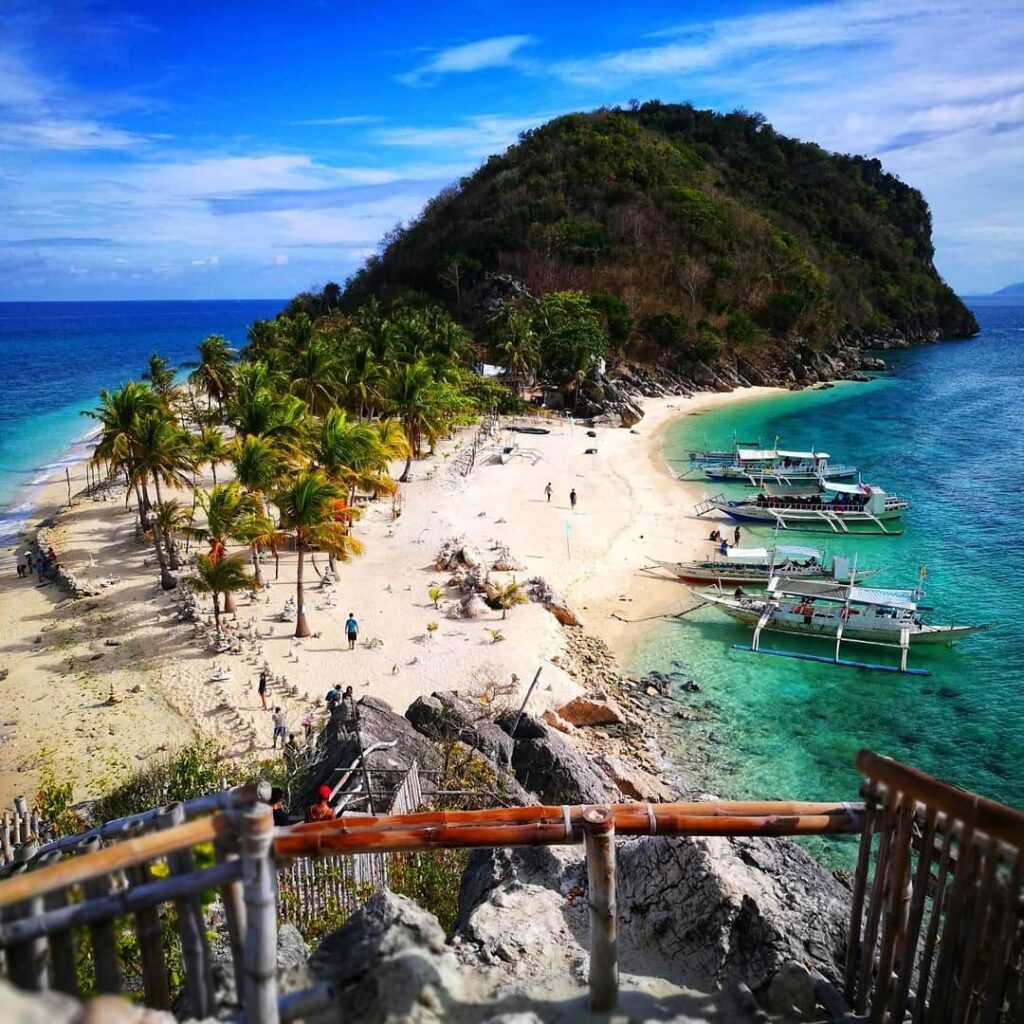
15. Gigantes, Iloilo
Gigantes Islands in Iloilo offer the ultimate island life experience with their beautiful beaches, unique rock formations, and vibrant marine life.
What makes Gigantes truly special is its untouched natural beauty, characterized by pristine beaches, towering limestone cliffs, and crystal-clear waters teeming with marine biodiversity.
The islands also boast fascinating geological formations, including towering limestone outcrops and hidden caves waiting to be explored.
Gigantes’ rich cultural heritage, with traces of ancient civilizations and seafaring traditions, adds a layer of depth to the island experience.
And makes it one of the best hidden beaches in the Philippines for solo travelers.
Best Time to Visit:
Visit Gigantes from November to May for the best weather and sea conditions, ensuring calm seas and sunny skies ideal for island exploration.
How to Get There:
Fly to Iloilo City, then take a bus or van to Carles.
From Carles, hire a boat to the Gigantes Islands, where you’ll be greeted by the stunning vistas and warm hospitality of the locals.
Tips for Solo Travelers:
To maximize your experience, join group tours for island hopping adventures and indulge in delicious seafood feasts prepared by local fishermen.
Don’t forget to bring snorkeling gear to explore the vibrant underwater world surrounding the islands.
Stay hydrated and protect yourself from the sun’s rays by wearing sunscreen and a wide-brimmed hat.
Lastly, interact with locals to learn about the island’s history and culture, gaining insights into the rich tapestry of Gigantes’ heritage and traditions.
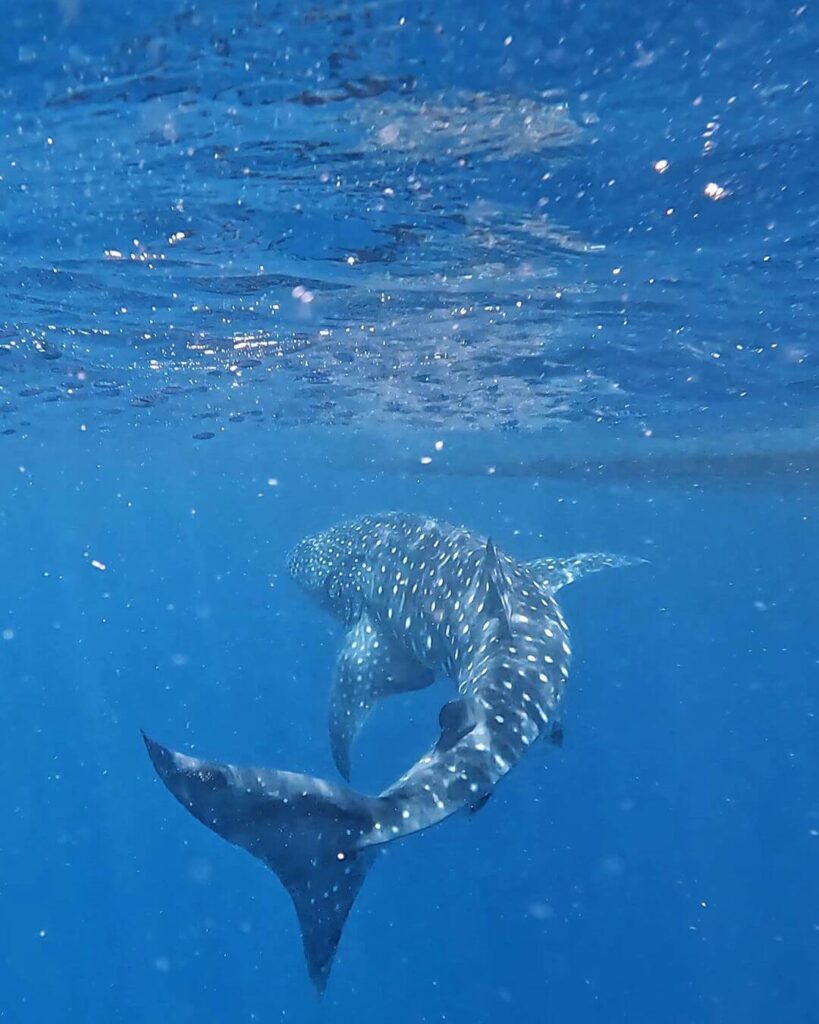
16. Oslob Beach, Cebu
Oslob Beach in Cebu is famed for its incredible whale shark encounters.
Offering visitors the chance to swim alongside these gentle giants and witness the majesty of the world’s largest fish up close.
Swimming with whale sharks in Oslob was one of the most awe-inspiring moments of my solo travels, as the sheer size of these creatures took my breath away.
Watching them glide gracefully through the ocean was a humbling experience that reminded me of the wonders of the natural world.
Best Time to Visit:
The best time to visit Oslob for whale shark interactions is from November to May when the seas are calmer and visibility is excellent, ensuring a better experience.
How to Get There:
To reach Oslob, fly into Mactan-Cebu International Airport.
From Cebu City, take a bus or van bound for Oslob, which is approximately a 3-4 hour drive.
The bus terminal is located at the South Bus Terminal.
Safety Tips for Solo Travelers:
It’s important to follow guidelines set by local authorities and tour operators to ensure your safety and the well-being of the whale sharks.
Keeping calm and composed in the water is essential to avoid startling the whale sharks.
Additionally, maintaining a respectful distance and avoiding touching them is crucial to prevent harm to both you and the creatures.
Ensure your snorkeling or diving gear is in good condition, and arrive early in the morning to avoid crowds and have a more personal experience.
Staying hydrated and informing someone of your itinerary are also important safety measures.
And don’t forget to capture memories with an underwater camera while enjoying this unforgettable experience.

17. Bantayan Beach, Cebu
Bantayan Beach in Cebu is the epitome of a serene retreat, offering a peaceful escape from the hustle and bustle of city life.
Known for its powdery white sand and calm, azure waters, Bantayan Beach is a perfect spot for those seeking tranquility.
The beach is framed by swaying palm trees, creating a picturesque backdrop that is both relaxing and visually stunning.
Aside from its natural beauty, Bantayan Beach is also home to friendly locals and a laid-back island vibe.
Making it an ideal destination for solo travelers looking to unwind and connect with nature.
The beach’s sunsets are particularly mesmerizing.
Shades of pink and orange sky can be enjoyed in solitude or while mingling with other beachgoers.
Best Time to Visit:
The best time to visit Bantayan Beach is during the dry season, from November to May.
This period offers the most pleasant weather, with clear skies and gentle breezes perfect for beach activities and relaxation.
How to Get There:
To reach Bantayan Beach, fly into Mactan-Cebu International Airport.
From Cebu City, take a bus or taxi to Hagnaya Port, which is about a 3-hour drive.
From Hagnaya Port, board a ferry to Santa Fe, Bantayan Island.
The ferry ride takes around 1.5 hours, offering scenic views of the surrounding islands.
Tips for Solo Travelers:
When visiting Bantayan Beach, embrace the slow pace of island life and take time to explore its hidden gems.
Stay in one of the many beachfront accommodations to fully enjoy the serene atmosphere and stunning views.
Engage with the local community, as the residents are known for their hospitality and can provide valuable insights into the island’s culture and the best spots to visit.
Try out local delicacies, especially the fresh seafood, which is a highlight of the island’s cuisine.
For a truly unique experience, consider renting a bicycle or motorbike to explore the island at your own pace, discovering secluded beaches and charming villages along the way.
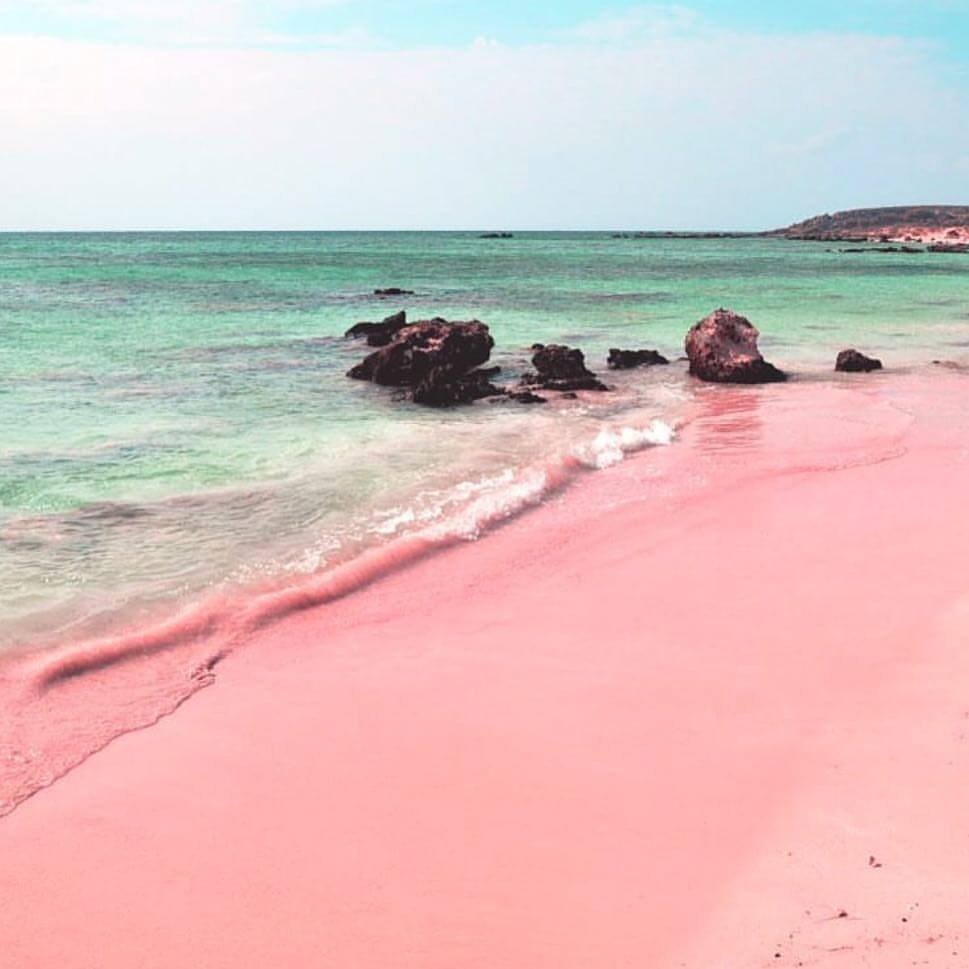
18. Great Santa Cruz Island, Zamboanga
Great Santa Cruz Island in Zamboanga is renowned for its unique pink sand beach, one of the few in the world.
The stunning pink hue comes from the crushed red organ pipe corals mixed with the white sand, creating a picturesque and rare beachscape.
This island is not just about its extraordinary sand color; it also boasts crystal-clear waters, vibrant coral reefs, and a rich marine ecosystem,
That makes it a haven for snorkeling and diving enthusiasts.
The island is relatively untouched by mass tourism, preserving its natural beauty and offering a peaceful retreat.
Additionally, the surrounding mangrove forests and diverse wildlife add to the island’s ecological significance and allure.
Best Time to Visit:
The ideal time to visit Great Santa Cruz Island is during the dry season, from January to May.
During these months, the weather is generally sunny and the sea conditions are calm, perfect for beach activities and underwater exploration.
How to Get There:
To get to Great Santa Cruz Island, fly into Zamboanga International Airport.
From there, take a short taxi ride to Paseo del Mar, the departure point for boats heading to the island.
The boat ride to Great Santa Cruz Island takes about 15-20 minutes.
It’s advisable to book your boat trip through the local tourism office to ensure safety and availability.
Tips for a Solo Trip:
When visiting Great Santa Cruz Island, make sure to plan ahead as the island has limited facilities.
Bring your own snacks, water, and essentials since there are no stores on the island.
Engage with local guides who can provide fascinating insights into the island’s history and ecological significance, enhancing your visit.
It’s also wise to carry a waterproof bag to protect your belongings while exploring the beach and snorkeling.
Respect the environment by avoiding littering and following the “Leave No Trace” principles to preserve the island’s pristine condition.
Since the island is a protected area, adhere to all guidelines and regulations set by local authorities to ensure a safe and enjoyable experience.
If you’re into photography, don’t forget your camera to capture the mesmerizing pink sands and stunning landscapes.
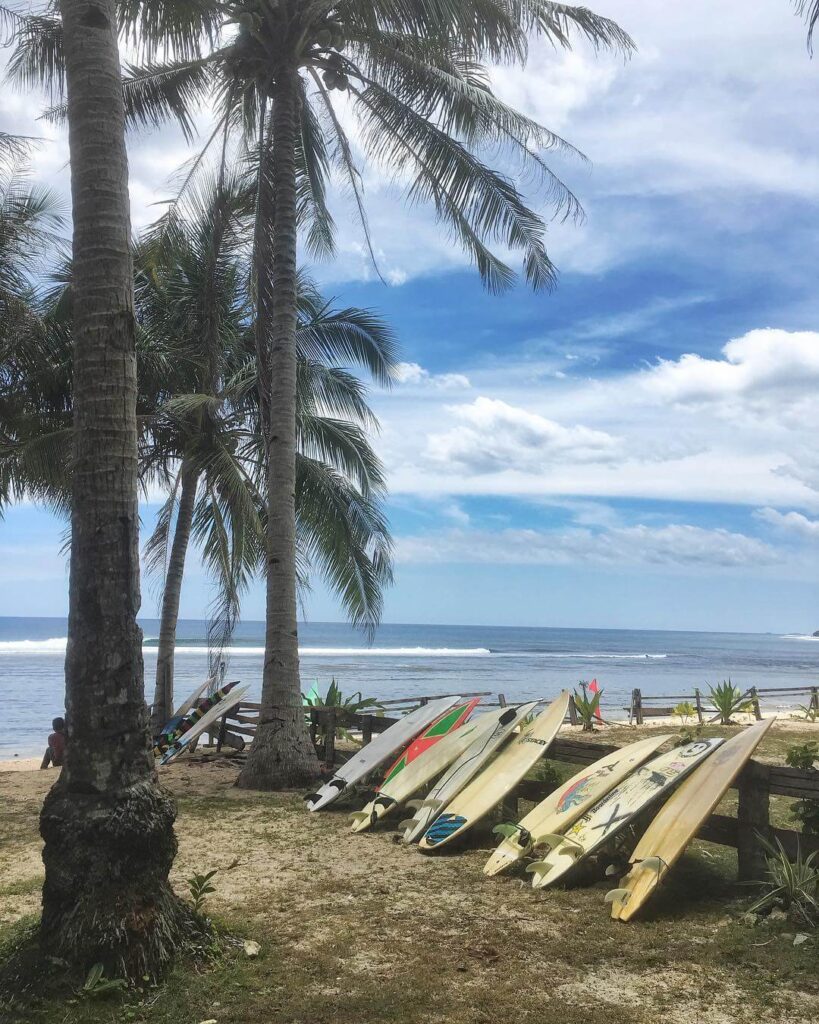
19. Siargao, Surigao Del Norte
Siargao, often hailed as the surfing capital of the Philippines, is famous for its legendary waves, especially the world-renowned Cloud 9 surf break.
This teardrop-shaped island offers a variety of surf spots suitable for all levels, from beginners to advanced surfers.
Beyond surfing, Siargao is a paradise of natural beauty with its stunning beaches, pristine lagoons, and lush mangrove forests.
The island is also known for its vibrant marine life, making it a popular destination for snorkeling and diving.
Best Time to Visit:
The best time to visit Siargao for surfing is between September and November, during the peak surf season when the waves are at their best.
However, the dry season from March to May is also ideal for enjoying the island’s other attractions and activities.
How to Get There:
To reach Siargao, fly into Siargao Airport (Sayak Airport) from Manila or Cebu.
From the airport, take a tricycle or van to your accommodation in General Luna, the main tourist hub and the closest town to the famous surf spots.
Alternatively, you can take a flight to Surigao City and then a ferry to Siargao Island, although this option involves more travel time.
Tips for Solo Surfers:
As a solo surfer in Siargao, it’s essential to pack your own surf gear, including a well-fitted board, surf wax, and a rash guard to protect against sunburn and board rash.
Stay hydrated and apply sunscreen frequently to protect yourself from the tropical sun.
Connecting with local surfers can enhance your experience, as they can offer valuable tips about the best surf spots and conditions.
Explore different surf breaks to find the ones that suit your skill level and preference.
Staying in surf hostels or guesthouses is a great way to meet fellow travelers and surfers, creating a sense of community.
Embrace the island vibe by exploring beyond the waves—visit the enchanting Sohoton Cove, take a dip in the natural pools at Magpupungko, and enjoy the island’s nightlife in General Luna.
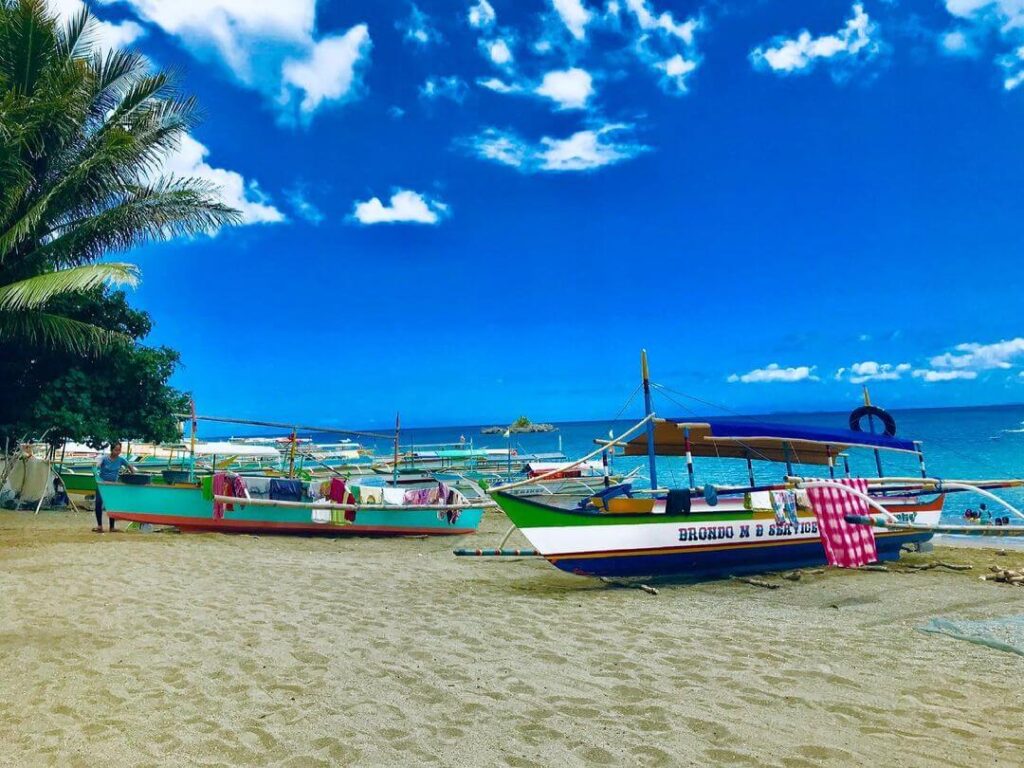
20. Caramoan, Camarines Sur
Caramoan, often referred to as a castaway paradise, boasts a series of stunning, unspoiled beaches and islands.
Its remote location has preserved its pristine beauty, making it an ideal escape for those seeking solitude and adventure.
The area is known for its dramatic limestone cliffs, lush greenery, and crystal-clear waters.
Caramoan’s beaches, like Matukad and Lahos, offer white sand and turquoise waters perfect for swimming and snorkeling.
The islands also provide excellent opportunities for kayaking and exploring hidden lagoons.
Caramoan’s natural beauty has caught the eye of reality TV producers, as it has been the filming location for several seasons of “Survivor.”
Best Time to Visit:
The best time to visit Caramoan is during the dry season, from March to May when the weather is ideal for island hopping, beach activities, and exploring stunning natural landscapes.
How to Get There:
To reach Caramoan, fly to Naga Airport from Manila or Cebu.
From Naga, take a bus or van to the town of Sabang, which is about two hours away.
From Sabang, board a boat to Caramoan, which takes approximately two hours.
Alternatively, you can take a bus from Manila to Caramoan, which is a longer journey but can be more economical.
Tips for Solo Travelers:
When traveling solo to Caramoan, it’s important to prepare for the journey by packing essentials like snacks, water, and entertainment for the long trip.
Staying in local guesthouses or eco-resorts can enhance your experience by offering a more authentic and comfortable stay.
Exploring the islands early in the morning allows you to enjoy the serene beauty without the crowds.
Engage with local boatmen and guides, who can offer insights and personalized tours of the lesser-known spots.
Bringing snorkeling gear and a waterproof camera ensures you capture the vibrant marine life and stunning underwater scenery.
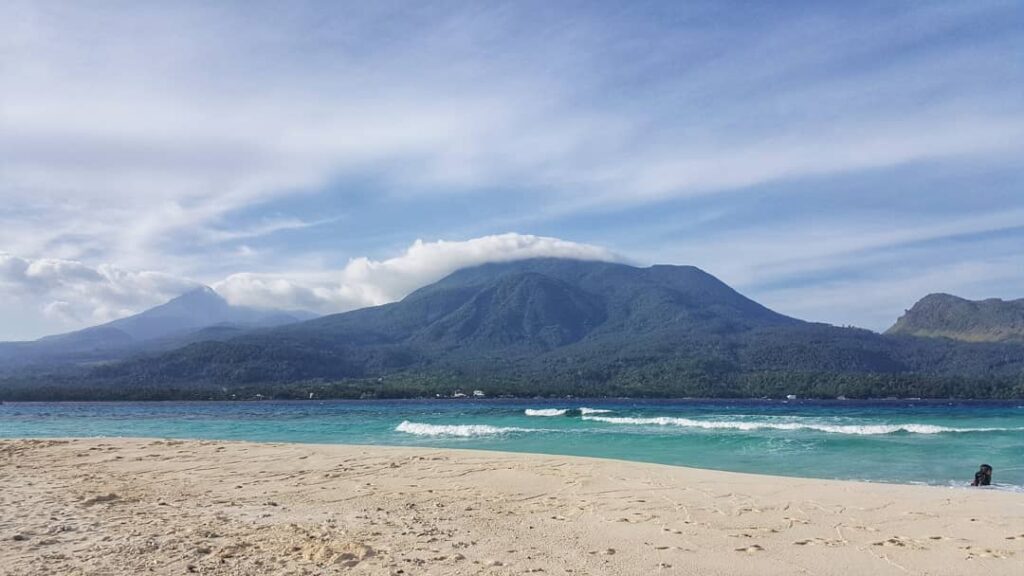
21. Camiguin Island, Bohol
Camiguin Island, often called the “Island Born of Fire,” is renowned for its volcanic origins and lush, diverse landscapes.
The island is dotted with seven volcanoes, the most famous being Mount Hibok-Hibok.
Its volcanic history has created unique natural attractions, including hot springs, cold springs, and stunning waterfalls.
The island’s beaches, like White Island and Mantigue Island, offer pristine white sands and clear, inviting waters.
White Island, in particular, is a picturesque sandbar with panoramic views of the surrounding volcanoes.
Camiguin is also known for its vibrant marine life, making it a great destination for snorkeling and diving.
Best Time to Visit:
The ideal time to visit Camiguin Island is from March to June, during the dry season.
This period offers the best weather for outdoor activities, beach hopping, and exploring the island’s natural wonders.
How to Get There:
To reach Camiguin Island, fly to Laguindingan Airport in Cagayan de Oro from Manila or Cebu.
From Cagayan de Oro, take a bus or van to Balingoan, which is about two hours away.
From Balingoan, board a ferry to Benoni Port in Camiguin, which takes around one hour.
Alternatively, you can take a direct flight to Camiguin’s Mambajao Airport from Cebu.
Tips for Solo Adventurers:
When traveling solo to Camiguin, make the most of the island’s diverse attractions by planning your itinerary to include both natural and historical sites.
Renting a motorbike is a convenient way to explore the island at your own pace, allowing you to visit places like the Sunken Cemetery, Katibawasan Falls, and Ardent Hot Springs.
Engage with local guides for a richer experience, especially when hiking the volcanoes or exploring underwater.
Staying in local guesthouses or beach resorts not only supports the community but also provides a more immersive experience.
Lastly, try the local delicacies, such as the famous pastel (sweet filled buns) and Lanzones fruit, for a true taste of Camiguin.
Final Thoughts, Best Hidden Beaches in the Philippines for Solo Travelers
Exploring the hidden gems of the Philippines is a journey into some of the most pristine and breathtaking landscapes the country has to offer.
These beaches, often untouched by mass tourism, provide the perfect setting for solitude, adventure, and deep connection with nature.
Whether it’s the crystal-clear waters of Paliton Beach in Siquijor or the unique rock formations of Antonia Beach in Islas de Gigantes Sur, each destination offers something uniquely captivating.
For solo travelers, these places are more than just travel destinations; they are sanctuaries where one can truly disconnect from the hustle of daily life and reconnect with oneself.
Solo travel brings with it a sense of freedom and self-discovery.
Wandering through these secluded beaches allows for spontaneous adventures and personal reflection.
The moments spent walking along the serene shores of Bitaog Beach in Catanduanes or camping under the stars at Mahabang Buhangin in Calaguas are more than just travel memories.
They are transformative experiences that foster personal growth and resilience.
The solitude found in these hidden paradises provides a perfect backdrop for introspection and creativity.
The Philippines, with its rich biodiversity and diverse landscapes, is an ideal destination for those who seek more than just a vacation.
Each hidden beach, from the pink sands of Great Santa Cruz Island to the surf-friendly shores of Dahican Beach in Mati, offers a unique story and a distinct experience.
These beaches are a testament to the natural beauty that lies off the beaten path, waiting to be discovered by those willing to take the road less traveled.
The joy of uncovering such hidden treasures often surpasses the experience of visiting well-trodden tourist spots.

